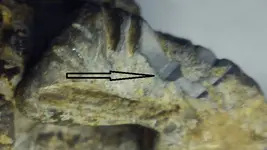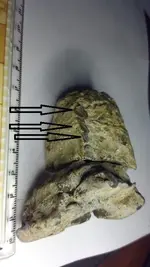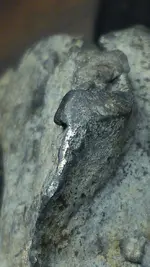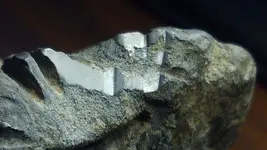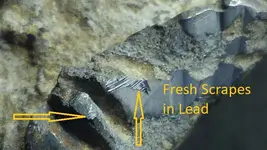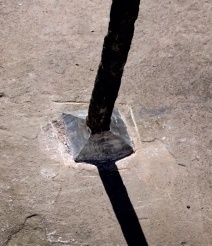PetesPockets55
Bronze Member
- Joined
- Apr 18, 2013
- Messages
- 1,728
- Reaction score
- 3,142
- Golden Thread
- 0
- Location
- Indian River Co., Fl
- Detector(s) used
- AT MAX & Carrot, Nokta Pulse Dice (:
- Primary Interest:
- All Treasure Hunting
I have an elderly uncle that is cleaning out some hard to place items and sent the following item to me. It is lead and he said came across it in 1980 while visiting England.
The background on the item involves Elizabeth "Bess" of Hardwick (1527-1608), a wealthy Victorian-era noblewoman and builder who outlived 4 husbands (Lord Cavendish was #2). She and husband #4 even got to "volunteer" their time and resources as custodian to Mary Queen of Scotts after her forced abdication by Queen Elizabeth.
If you follow the link above you can see some of her building handiwork.
According to my uncle, most materials for the construction came from the property itself. On a tour of the site he kicked aside some leaves and saw this item and believes it was part of the roof. It weighs about half a pound and is about 2-1/2" to 2-3/4" tall with a square hole in the middle that doesn't extend through the other side. This leads me to believe it may have been a cap over something. I'm wondering if they may have used a technique of covering iron with lead to help keep it from being exposed and rusting.
Anyway, enough blabbering on and on. Here are the images and let me know if you have any ideas on what this may be.
PP55
The background on the item involves Elizabeth "Bess" of Hardwick (1527-1608), a wealthy Victorian-era noblewoman and builder who outlived 4 husbands (Lord Cavendish was #2). She and husband #4 even got to "volunteer" their time and resources as custodian to Mary Queen of Scotts after her forced abdication by Queen Elizabeth.
If you follow the link above you can see some of her building handiwork.
According to my uncle, most materials for the construction came from the property itself. On a tour of the site he kicked aside some leaves and saw this item and believes it was part of the roof. It weighs about half a pound and is about 2-1/2" to 2-3/4" tall with a square hole in the middle that doesn't extend through the other side. This leads me to believe it may have been a cap over something. I'm wondering if they may have used a technique of covering iron with lead to help keep it from being exposed and rusting.
Anyway, enough blabbering on and on. Here are the images and let me know if you have any ideas on what this may be.
PP55
Attachments
-
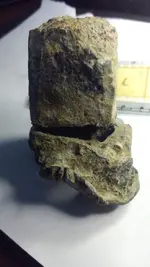 HardwickHallVicinityLeadArtifactCirca1557_ProfileA2Upright.webp44.6 KB · Views: 65
HardwickHallVicinityLeadArtifactCirca1557_ProfileA2Upright.webp44.6 KB · Views: 65 -
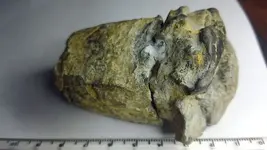 HardwickHallVicinityLeadArtifactCirca1557_ProfileD2.webp35.1 KB · Views: 80
HardwickHallVicinityLeadArtifactCirca1557_ProfileD2.webp35.1 KB · Views: 80 -
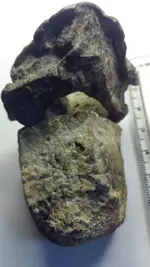 HardwickHallVicinityLeadArtifactCirca1557_ProfileB2Opening.webp49.1 KB · Views: 59
HardwickHallVicinityLeadArtifactCirca1557_ProfileB2Opening.webp49.1 KB · Views: 59 -
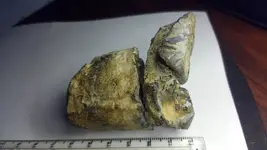 HardwickHallVicinityLeadArtifactCirca1557_ProfileA1.webp27.4 KB · Views: 55
HardwickHallVicinityLeadArtifactCirca1557_ProfileA1.webp27.4 KB · Views: 55 -
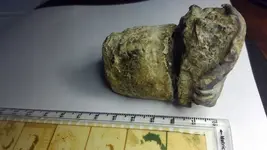 HardwickHallVicinityLeadArtifactCirca1557_ProfileB1.webp32.4 KB · Views: 53
HardwickHallVicinityLeadArtifactCirca1557_ProfileB1.webp32.4 KB · Views: 53 -
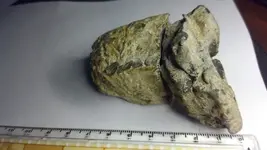 HardwickHallVicinityLeadArtifactCirca1557_ProfileC1.webp29.3 KB · Views: 57
HardwickHallVicinityLeadArtifactCirca1557_ProfileC1.webp29.3 KB · Views: 57 -
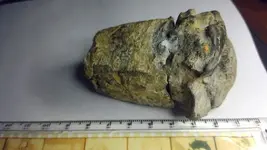 HardwickHallVicinityLeadArtifactCirca1557_ProfileD1.webp31.2 KB · Views: 60
HardwickHallVicinityLeadArtifactCirca1557_ProfileD1.webp31.2 KB · Views: 60 -
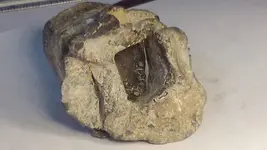 HardwickHallVicinityLeadArtifactCirca1557_Base5.webp32.4 KB · Views: 53
HardwickHallVicinityLeadArtifactCirca1557_Base5.webp32.4 KB · Views: 53 -
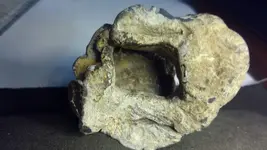 HardwickHallVicinityLeadArtifactCirca1557_Base1.webp35.8 KB · Views: 53
HardwickHallVicinityLeadArtifactCirca1557_Base1.webp35.8 KB · Views: 53 -
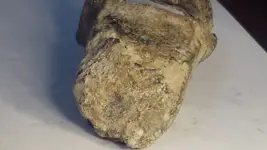 HardwickHallVicinityLeadArtifactCirca1557_Top1.webp28.3 KB · Views: 54
HardwickHallVicinityLeadArtifactCirca1557_Top1.webp28.3 KB · Views: 54
Last edited:




